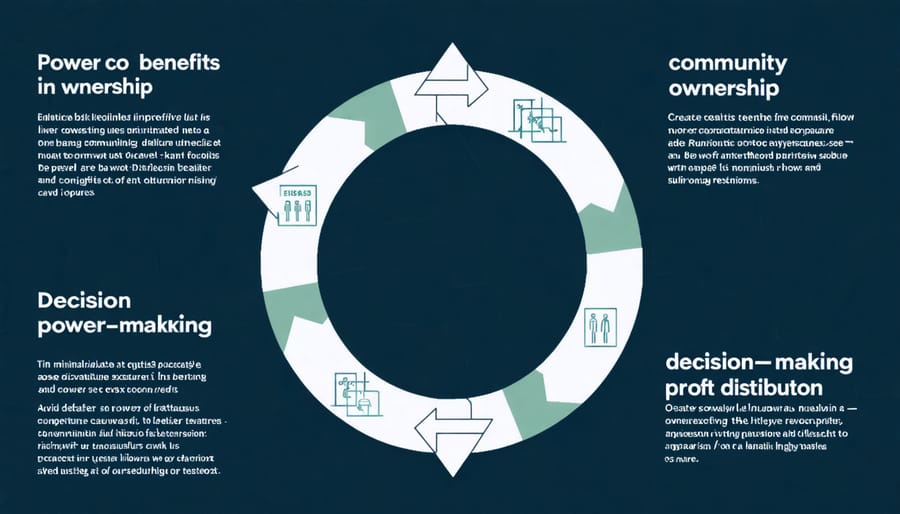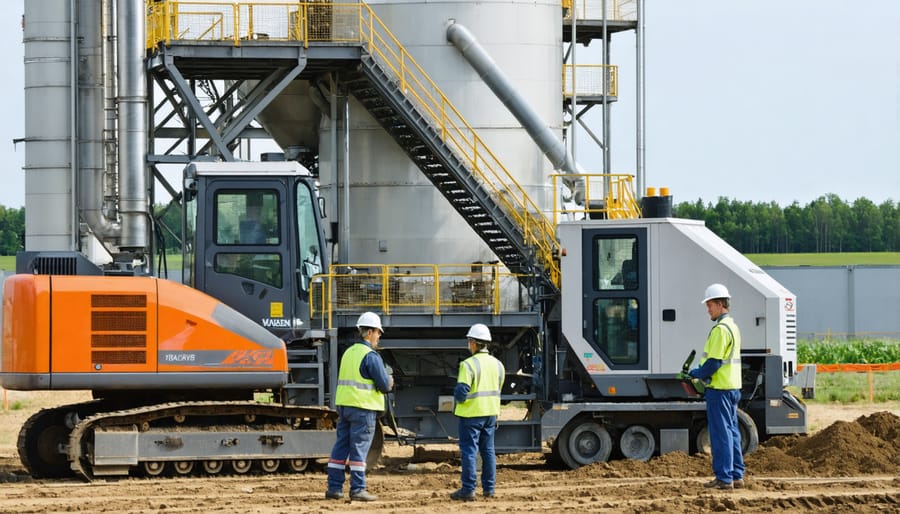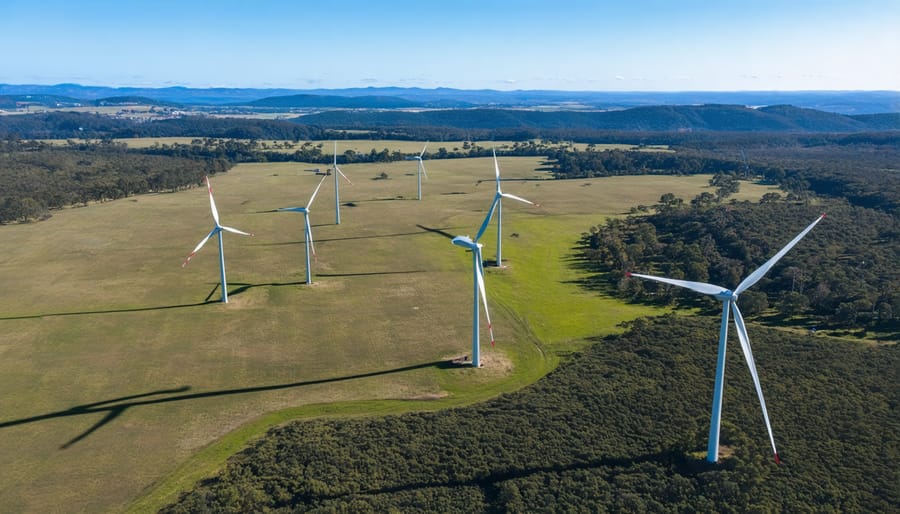Power cooperatives are transforming how communities access, control, and benefit from their energy resources, revolutionizing Australia’s clean energy future through grassroots ownership and democratic control. These member-owned utilities combine the efficiency of modern energy systems with the trusted principles of cooperative governance, enabling local communities to shape their energy destiny while driving the transition to renewable sources.
Unlike traditional power companies, these democratic institutions return profits directly to member-owners, invest in community infrastructure, and prioritize sustainable practices that benefit both people and planet. From Queensland’s solar-powered farming cooperatives to Victoria’s community wind projects, these innovative models are proving that energy democracy isn’t just possible – it’s already powering thousands of Australian homes and businesses while building more resilient, sustainable communities.
As energy costs rise and climate challenges mount, power cooperatives offer a proven solution that puts control back in local hands while accelerating our shift toward a cleaner, more equitable energy future.

What Makes Power Cooperatives Different?
Democratic Energy Management
Power cooperatives embody true democratic principles by putting control directly in members’ hands. Each member, regardless of their energy usage level, gets one vote in key decisions affecting the cooperative’s direction, from choosing board representatives to approving major infrastructure investments. This “one member, one vote” system ensures fair representation and prevents larger consumers from dominating decision-making.
Members participate through annual general meetings, where they can voice concerns, propose initiatives, and vote on important matters. Many cooperatives also establish working groups where members can contribute their expertise in areas like technology selection, environmental impact assessment, and community engagement.
The financial benefits are shared equitably too. After covering operational costs and setting aside funds for maintenance and expansion, surplus revenues are returned to members as patronage dividends, typically proportional to their energy consumption. This democratic profit-sharing model ensures that the economic advantages of cooperative ownership flow back to the community.
Additionally, members often have opportunities to participate in energy education programs and sustainability initiatives, fostering a sense of collective ownership and environmental responsibility.
Local Economic Benefits
Power cooperatives serve as powerful engines of local economic growth, creating substantial employment opportunities while ensuring community wealth retention. These organisations typically employ local residents across various roles, from technical positions like maintenance technicians and engineers to administrative staff and customer service representatives.
In rural Australian communities, power cooperatives often become major employers, providing stable, well-paying jobs that help keep skilled workers in the region. The multiplier effect of these positions extends beyond direct employment, supporting local businesses and services through increased spending power within the community.
Unlike traditional utility companies that channel profits to distant shareholders, power cooperatives reinvest their earnings locally. This creates a virtuous cycle of economic development, where surplus funds support infrastructure improvements, community projects, and member dividends. Many cooperatives also partner with local educational institutions to provide training programs and apprenticeships, fostering the next generation of energy professionals while building valuable skills within the community.
The economic benefits are particularly evident during infrastructure upgrades and renewable energy projects, which often engage local contractors and suppliers, further strengthening the regional economy.
Bioenergy and Power Cooperatives
Agricultural Waste to Energy
Australian farming communities are turning their agricultural waste into valuable energy resources through innovative power cooperative initiatives. From sugar cane residue in Queensland to livestock manure in Victoria, farmers are discovering that yesterday’s waste can power tomorrow’s homes.
These agricultural waste-to-energy projects typically involve collecting organic materials like crop stubble, animal waste, and food processing residues. Through processes such as anaerobic digestion and biomass combustion, these materials are converted into biogas or electricity that can power local communities.
The Goulburn Valley Bioenergy Cooperative serves as a shining example. Local dairy farmers pool their cattle manure, which is processed in a central biodigester facility. The resulting biogas powers over 1,000 homes in the region, while the nutrient-rich byproduct serves as organic fertilizer for crops.
Beyond energy generation, these initiatives create additional income streams for farmers and reduce greenhouse gas emissions from decomposing agricultural waste. The cooperative model ensures that benefits flow directly back to participating farmers and their communities.
Many regional councils now support these projects through grants and infrastructure development. For farmers interested in joining or starting an agricultural waste-to-energy cooperative, local agricultural extension offices provide guidance on feasibility studies, technology options, and funding opportunities.
This circular approach to energy production demonstrates how rural communities can lead Australia’s transition to sustainable power while strengthening local economies.

Sustainable Forest Management
Power cooperatives across Australia are leading the way in responsible forestry management, transforming what was once considered waste into valuable renewable energy. By carefully collecting and processing forestry residues – including tree tops, branches, and damaged timber left after harvesting operations – these cooperatives are creating sustainable energy solutions while supporting healthy forest ecosystems.
The process begins with selective collection of residues, ensuring enough organic matter remains on the forest floor to maintain soil health and biodiversity. Local forestry experts work alongside cooperative members to identify suitable materials and establish collection guidelines that protect native wildlife habitats and support forest regeneration.
Many cooperatives have developed partnerships with local sawmills and timber processing facilities to access their waste materials, creating efficient circular economy systems. These partnerships not only provide a steady supply of biomass for energy generation but also help reduce the industry’s carbon footprint by preventing the burning or decay of unused materials.
In regions like the Green Triangle of South Australia and Victoria, power cooperatives have implemented innovative tracking systems to monitor the source and sustainability of their forest residues. This transparency allows members to make informed decisions about their energy consumption while ensuring their power generation activities contribute to positive environmental outcomes.
Success stories from cooperatives in Tasmania demonstrate how sustainable forest management can create jobs in rural communities while supporting Australia’s renewable energy targets. These initiatives prove that with careful planning and community involvement, power cooperatives can turn forestry by-products into reliable, sustainable energy sources.
Success Stories
Hepburn Wind
Established in 2011, Hepburn Wind stands as a pioneering achievement in Australia’s renewable energy landscape, marking the country’s first community-owned wind farm. Located in Leonards Hill, Victoria, approximately 100km northwest of Melbourne, this groundbreaking project demonstrates the power of community action in driving sustainable energy solutions.
The initiative began when local residents of the Hepburn Shire joined forces to address climate change concerns while maintaining energy independence. Through extensive community consultation and grassroots fundraising, over 2,000 members collectively raised $9.8 million to install two 2.05 MW wind turbines, lovingly named Gale and Gusto by the community.
The wind farm generates enough clean electricity to power approximately 2,100 homes, effectively meeting the residential electricity needs of Daylesford and much of the surrounding area. This output represents more than the entire electricity consumption of nearby Daylesford and Hepburn Springs combined, making the region a net exporter of clean energy.
What sets Hepburn Wind apart is its cooperative structure, where community members are both owners and beneficiaries. The project returns profits to its members while supporting local community initiatives through its Community Fund, which has distributed over $150,000 in grants to local projects since its inception.
The success of Hepburn Wind has inspired numerous community energy projects across Australia, serving as a blueprint for how communities can take control of their energy future. The project has won multiple awards, including the World Wind Energy Award, and continues to demonstrate how community-owned renewable energy can deliver both environmental and social benefits while maintaining strong financial returns.

Byron Bay Community-Owned Renewable Energy
Byron Bay has emerged as a beacon of community-driven renewable energy innovation in Australia, showcasing how local initiatives can transform regional power systems. The Byron Bay Community-Owned Renewable Energy project exemplifies the shift towards sustainable energy solutions while keeping benefits within the community.
At the heart of this initiative is the Byron Bay Solar Farm, a 5-megawatt facility that powers approximately 1,500 local homes. What makes this project unique is its ownership structure – local residents and businesses have direct stakes in the operation, ensuring profits and decision-making power remain in the community.
The project has expanded beyond solar to include innovative bioenergy solutions. The Byron Bay Bioenergy Facility processes organic waste from local agricultural operations and food businesses, converting it into clean energy and high-quality compost. This circular economy approach addresses both waste management and energy production challenges while creating local employment opportunities.
Community engagement has been crucial to the project’s success. Regular workshops and education programs help residents understand renewable energy technologies and their benefits. The initiative has also established a revolving fund that supports other local sustainability projects, creating a ripple effect of positive environmental impact throughout the region.
The success of Byron Bay’s community energy model has inspired similar projects across Australia. It demonstrates how regional communities can take control of their energy future while contributing to national sustainability goals. The project has reduced local carbon emissions by an estimated 5,000 tonnes annually while keeping energy costs stable for participants.
This grassroots approach to renewable energy has created a template for other communities looking to establish their own power cooperatives, proving that local action can drive significant environmental change.
Starting Your Own Power Cooperative
Legal Framework
Power cooperatives in Australia operate within a complex yet enabling regulatory framework designed to support community-owned energy initiatives. The primary legislation governing these entities includes the Cooperatives National Law (CNL) and state-specific regulations that outline formation requirements, governance structures, and operational guidelines.
To establish a power cooperative, organizations must register with their state’s regulatory body and comply with specific requirements, including maintaining a minimum number of members, developing a constitution, and establishing democratic decision-making processes. These cooperatives must also adhere to energy sector regulations, particularly those outlined in the National Electricity Rules and state-based renewable energy policies.
Environmental compliance is another crucial aspect, with cooperatives required to meet sustainability standards and reporting obligations. Many power cooperatives leverage inclusive utility investment models to ensure regulatory compliance while maximizing community benefits.
Recent regulatory reforms have made it easier for power cooperatives to connect to the grid and participate in energy markets. The Clean Energy Regulator provides guidelines for renewable energy certificates and other incentives, while state governments often offer additional support through grants and policy frameworks designed to encourage community-owned energy projects.
Tax considerations are also important, with cooperatives typically operating under specific provisions that recognize their community-focused nature and provide certain advantages compared to traditional business structures.
Community Engagement
Power cooperatives thrive on strong community engagement and active membership participation. These organizations regularly host community forums, workshops, and information sessions to educate residents about renewable energy benefits and opportunities. Through community-based energy education programs, cooperatives help members understand their role in sustainable energy production and consumption.
Successful cooperatives often establish local energy ambassadors who serve as bridges between the organization and the community. These volunteers share their experiences, answer questions, and help neighbours understand the practical benefits of cooperative membership. Regular newsletters, social media updates, and community events keep members informed and engaged while fostering a sense of shared ownership and purpose.
Many Australian power cooperatives organize site visits to renewable energy installations, allowing members to see their investments in action. They also create opportunities for members to participate in decision-making processes through regular meetings and voting sessions. This democratic approach ensures that the cooperative’s direction aligns with community needs and values.
Building support often starts with identifying local energy champions and forming working groups focused on specific aspects of the cooperative’s operations. These groups might address technical issues, financial planning, or community outreach, allowing members to contribute their skills and expertise while strengthening the cooperative’s foundation through active participation.
Power cooperatives represent a transformative path forward for Australia’s energy landscape, offering communities a practical and sustainable way to take control of their energy future. As we’ve explored throughout this article, these member-owned organisations are proving to be catalysts for change, driving the adoption of renewable energy while keeping costs affordable and benefits local.
The success stories from existing power cooperatives across Australia demonstrate that this model isn’t just theoretical – it’s already working and delivering real results. From regional communities generating their own solar power to urban cooperatives negotiating better rates for their members, these initiatives are reshaping how Australians think about and consume energy.
Looking ahead, power cooperatives are well-positioned to play a crucial role in Australia’s transition to renewable energy. Their community-focused approach aligns perfectly with our national goals for sustainability while addressing key challenges like energy affordability and grid reliability. The flexibility of the cooperative model means it can adapt to new technologies and changing needs, making it particularly resilient in our rapidly evolving energy landscape.
For communities considering establishing their own power cooperative, the path is clear and the potential rewards significant. With supportive legislation, growing public interest in sustainable energy, and proven success stories to learn from, there’s never been a better time to embrace this collaborative approach to power generation and distribution. Power cooperatives aren’t just an alternative to traditional energy systems – they’re a blueprint for Australia’s sustainable future.

